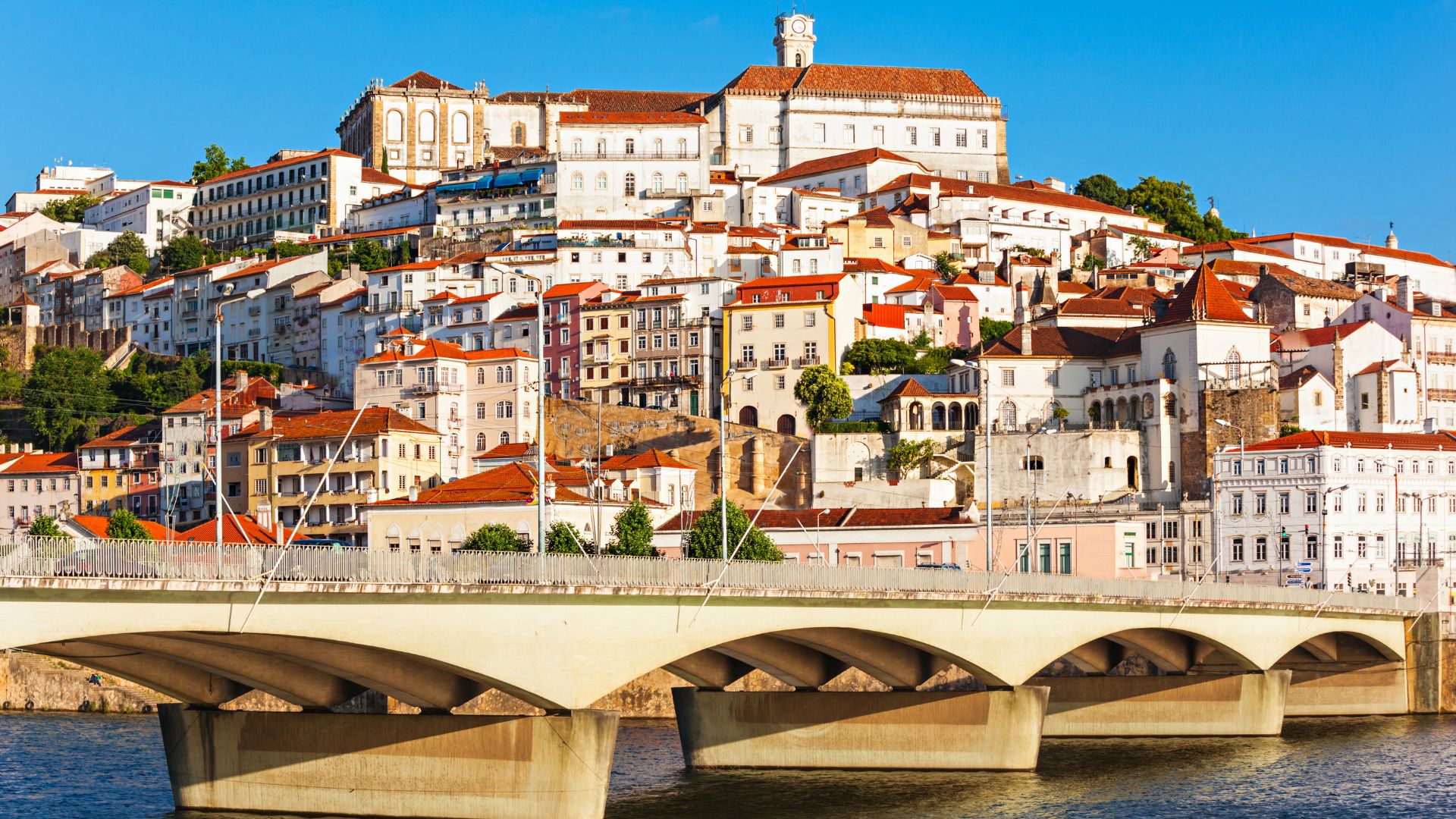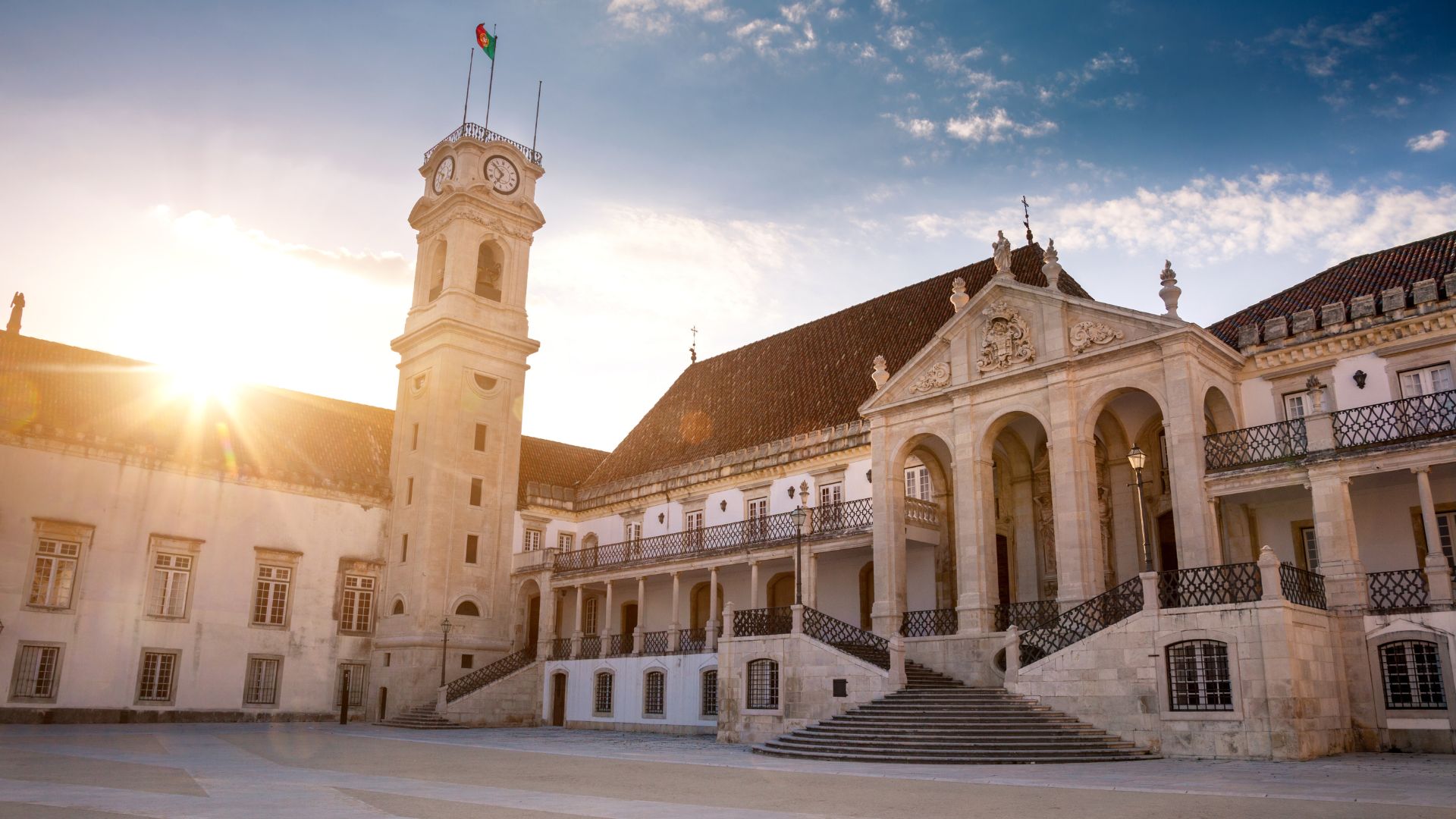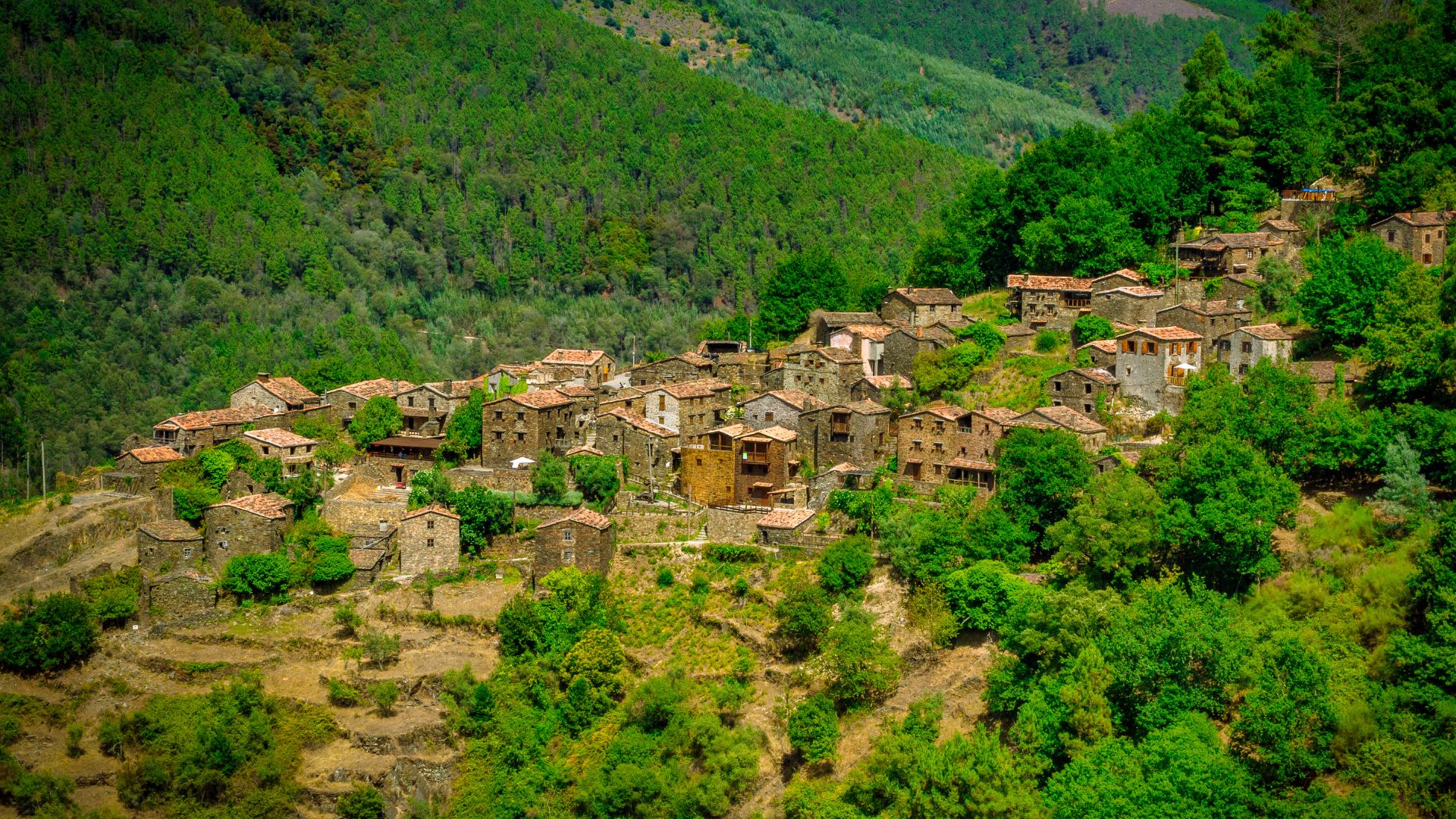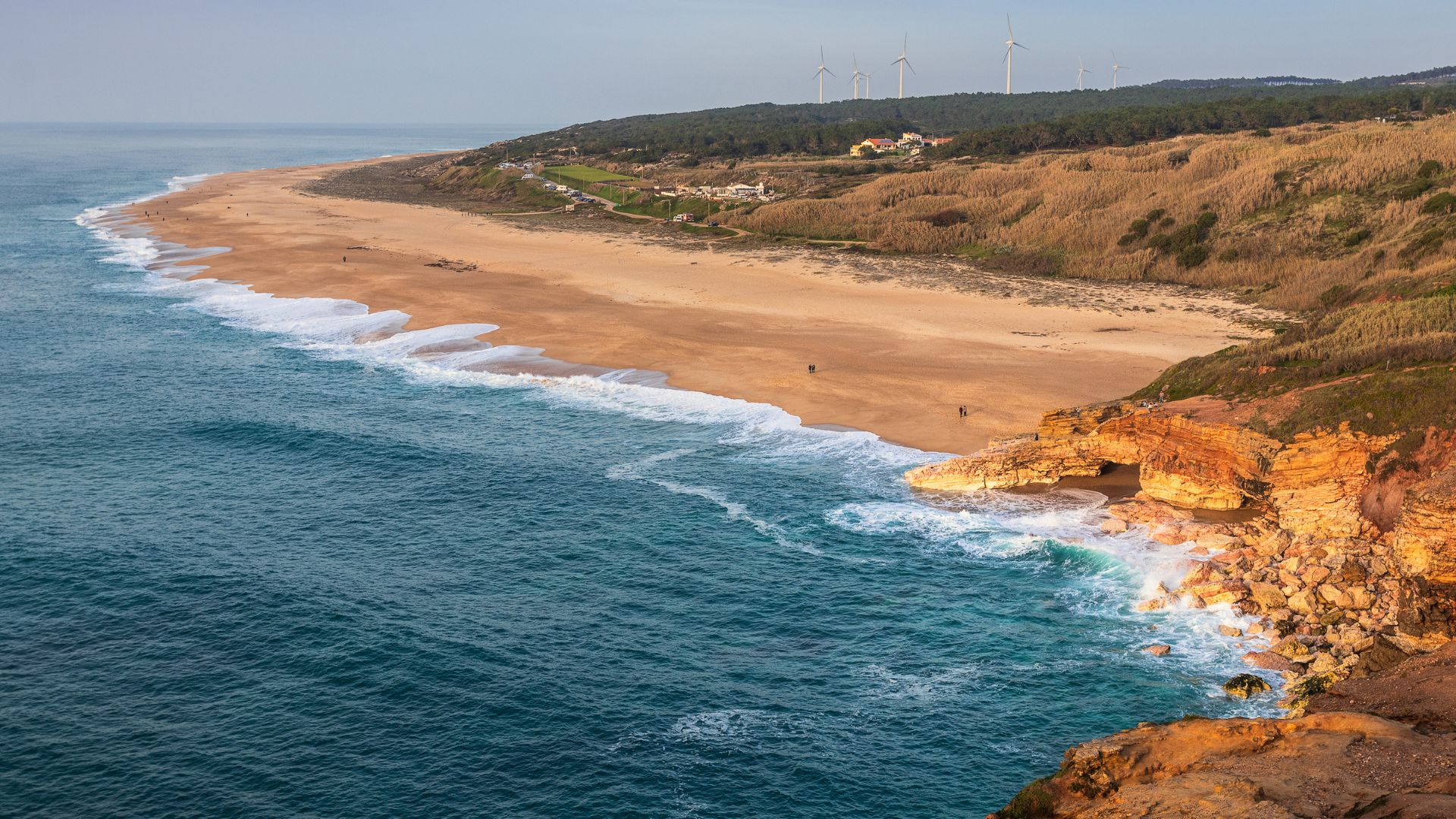Honestly, I never thought the Centro Region of Portugal would steal my heart, but here we are. Nestled between Lisbon and Porto, Central Portugal mixes up jaw-dropping scenery, charming villages, and a laid-back vibe you just don’t get in the busier cities.
The authenticity of the Centro region is impossible to fake. Every moment felt personal, and somehow, unforgettable.
I wandered ancient streets in towns like Coimbra. I relaxed by peaceful river beaches. Adventure and relaxation—honestly, I got both, sometimes in the same afternoon.
The food? It’s traditional but not boring. Locals greeted me with genuine warmth, and the landscapes—wow, just wow. If you’re after the real Portugal, let me try to explain why Centro became my favorite.

Why the Centro Region Surprised Me
I thought I had Portugal figured out—coastal towns, the sound of fado, endless wine. Central Portugal threw those ideas out the window. Instead, I found wild nature, friendly faces, and a history that felt different from anywhere else.
Breaking Typical Portuguese Stereotypes
Before I arrived, I pictured Portugal as beaches in the Algarve and the lively chaos of Lisbon and Porto. Centro had its own rhythm. Instead of crowds, I discovered peaceful villages that felt like they belonged to the landscape.
There were mountains for hiking, river beaches for lazy afternoons, and fishing villages that looked untouched by time. I stumbled onto ski slopes in Serra da Estrela in winter—who knew Portugal even had snow? That contrast really made me reconsider what I thought I knew about the country.
Centro didn’t match my old expectations. Instead, I found traditions and daily life you won’t see in most guidebooks. The pace was slower. I could sit in a café for ages, just soaking up the atmosphere and letting the region show itself to me in little ways.
The Heartbeat of Central Portugal
When I walked the cobbled streets of Coimbra, I heard fado, but it wasn’t the polished, touristy stuff. Coimbra fado felt intimate—almost like a secret whispered through old university halls. The music tells stories of heartbreak and history.
The countryside begged me to explore. I hiked forest trails near tiny villages and wandered through medieval castles in places like Óbidos. Local adegas poured me wine and treated me like an old friend. The wines—especially from Bairrada and Dão—were bold and totally unique.
History runs deep here. Roman ruins in Coimbra, Gothic monasteries like Batalha, and traditions passed down for generations. Everything felt connected, like the region was quietly proud of its roots but still happy to welcome curious travelers.

Welcoming Atmosphere and Local Life
What really got me was how quickly people made me feel at home. In small villages, shopkeepers waved from their doors. I found it easy to strike up conversations over a glass of wine or a plate of cheese.
Life moved at a gentler pace. People lingered over long lunches, savoring roasted goat or cod with potatoes. At the weekly markets, grandmothers chatted over baskets of veggies while kids darted between stalls. I joined in and felt like I belonged, at least for a little while.
Authenticity here wasn’t just a buzzword. It lived in the stone houses, in laughter echoing through narrow streets, and in the pride locals took in their heritage. The Centro region’s kindness stuck with me and kept me curious for more.
Enchanting Historical Wonders
I didn’t expect Centro to be packed with such jaw-dropping sites and stories. Nowhere else in Portugal felt quite as alive with history and old-world charm.
World Heritage Gems: Convent of Christ, Batalha, and Alcobaça
When I reached the Convent of Christ in Tomar, I finally understood the UNESCO hype. That Manueline window—honestly, it looked like stone lace. I wandered vast halls and secret passages, feeling the layers of history unfold with every step.
The Monastery of Batalha stunned me. Its bold Gothic architecture and those stained glass windows—when the afternoon sun hit, I just stopped and stared. If you love history, don’t miss the Founder’s Chapel or the unfinished chapels (Capelas Imperfeitas). Both mark Portugal’s leap from medieval to modern.
In Alcobaça, the Monastery of Alcobaça had a totally different vibe. Its cool Cistercian design and the tragic love story of Pedro and Inês (their tombs are side by side) left me feeling oddly moved. Every carving tells a bit of Portugal’s old tales.
| Site | Town | Notable Features |
|---|---|---|
| Convent of Christ | Tomar | Templar halls, Manueline window |
| Monastery of Batalha | Batalha | Founder’s Chapel, Gothic architecture |
| Alcobaça Monastery | Alcobaça | Cistercian style, royal tombs |

Medieval Towns and Castles
In Óbidos, I felt like I’d walked onto a movie set. Whitewashed homes, bursts of bougainvillea, and castle walls all around. I even stayed in a room inside the old fort—it was a highlight.
Leiria brought something different with its hilltop castle and sweeping city views. Evenings were magical as families wandered the patterned plazas below.
Every village seemed to have its own castle or hidden square. Each stop felt like a new chapter in a wild, ongoing story.
- Óbidos: medieval walls, historic streets, literary festivals
- Leiria Castle: panoramic views, centuries-old towers
- Other villages: little squares, hidden churches, stone archways
Traces of Coimbra’s University Legacy
Coimbra buzzes with student energy and old traditions. The University of Coimbra, founded in 1290, ranks among the world’s oldest. Touring the Joanina Library, I got lost in baroque details and the smell of ancient books.
Students in black capes fill the city’s steep streets. I caught glimpses of their rituals and realized how much education shapes the city. Fado drifting from cafés added a bittersweet feeling.
Don’t skip these:
- Joanina Library: 18th-century gem filled with rare books
- Royal Palace of Alcáçova: where classes first started
- Botanical Garden: one of Europe’s oldest, calm and green
Strolling through Coimbra’s center, I felt the city’s academic pulse and deep history.

Breathtaking Landscapes and Outdoor Experiences
Central Portugal constantly surprised me with its wild landscapes and outdoor adventures. From mountains to hidden river beaches, it felt like discovering a secret.
The Magnificence of Serra da Estrela
The Serra da Estrela mountains rise up as Portugal’s tallest. I breathed in crisp air and stared at views that seemed to go on forever.
Serra da Estrela changes with the seasons. Winter brings skiing and snowboarding—yep, real snow in Portugal! Spring and summer open up hiking trails winding past cliffs and wildflower meadows.
Manteigas, a quiet mountain town, became my favorite stop. I grabbed local cheese and honey for a picnic that honestly topped any fancy restaurant. If you crave dramatic scenery, this is the place.
Adventure in the Schist Villages and Mountain Trails
The schist villages around Lousã felt frozen in time. Built from dark, layered stone, these villages hide in green forests.
I wandered the winding streets of Talasnal and Cerdeira. Locals shared homemade bread and stories at outdoor tables. Marked hiking trails connect these villages, and the smell of pine and eucalyptus lingers everywhere.
If you love hiking or biking and want a taste of living history, don’t skip the schist villages. The rugged landscape and hidden corners make every walk an adventure.

River Beaches and Freshwater Escapes
Central Portugal’s river beaches gave me a break from the Atlantic. These ‘praias fluviais’ dot the region, tucked along quiet rivers in lush valleys.
Loriga River Beach, with its clear pools, and Piódão River Beach near one of Portugal’s prettiest villages, stood out. Most spots have picnic tables, cafés, and calm water—great for families or solo travelers.
Spending a lazy afternoon at a river beach felt like a local secret. I rarely saw crowds. There was always a shady spot or a smooth rock for jumping into the water.
Scenic Drives Through Beira Alta and Beira Baixa
Driving through Beira Alta and Beira Baixa, I kept pulling over for photos. Winding roads cut through mountains, vineyards, and stone villages perched above valleys.
The drive from Guarda to Monsanto took me past granite boulders and sweeping views. I stopped in small towns like Belmonte and Idanha-a-Nova—each with its own charm, markets, and medieval streets.
Renting a car let me explore at my own pace. Each stop brought something unexpected, and finding pastries in roadside cafés quickly became a habit I don’t regret.
Coastal Charms and Waterside Magic
Central Portugal’s coast really surprised me. I found a mix of lively cities, golden beaches, and world-famous waves. The small moments stuck with me—like fishermen fixing nets or the way tiled Art Nouveau buildings reflected in the canals.
Aveiro’s Canals and Art Nouveau Flair
Aveiro felt like nowhere else in Portugal. Along the canals, I watched moliceiro boats painted with local scenes and jokes glide by. They give Aveiro its “Venice of Portugal” nickname.
Art Nouveau buildings line the main streets, showing off curved windows and pastel colors. I found little cafés by the lagoon and tried ovos moles—a sweet I still think about. Renting a bike made exploring easy since Aveiro is flat and super bike-friendly.
Here’s a quick look at Aveiro highlights:
| What to See | Why It Stands Out |
|---|---|
| Canals & Moliceiros | Traditional boats, scenic rides, relaxed atmosphere |
| Art Nouveau | Unique architecture, photo opportunities |
| Lagoon | Wildlife watching, peaceful nature walks |

Golden Beaches from Figueira da Foz to Nazaré
When I headed west, the Atlantic coast greeted me with fishing villages and those endless, golden beaches. Figueira da Foz buzzes with its long stretch of sand and a lively, laid-back vibe.
The promenade pulls together surf shops, seafood joints, and late-night gelato stands. I loved just soaking in the slow pace and watching people as the sun dipped behind the Atlantic.
Driving north, I landed in Nazaré. This town wears its fishing roots proudly and the sea views are honestly breathtaking.
Nazaré’s main beach sprawls wide, dotted with colorful boats hauled onto the sand. I always made time for grilled sardines and watched locals fixing nets in the late afternoon.
The historic upper-town, Sitio, gives you those dramatic views—cliffs, ocean, the whole show.
Beach highlights:
- Figueira da Foz: Huge sands and classic beach town energy
- Nazaré: Steep cliffs, iconic fishing traditions, and killer vistas
- Peniche: Chill surf town, fresh seafood everywhere
Surfing Hotspots and Praia do Norte
Portugal’s famous for surfing, but Centro’s stretch of coastline? It’s a dream for beginners and pros alike.
At Praia do Norte in Nazaré, I watched surfers tackle some of the world’s biggest waves. In winter, big wave competitions draw athletes from everywhere.
Seeing those monster waves smash against the lighthouse—yeah, it sticks with you.
Peniche is another surf hotspot, great for lessons or just catching steady Atlantic breaks. I signed up for a beginner lesson there and the vibe was so easygoing and encouraging, even if you’re new.
The rugged coast and surf-friendly beaches make Centro a year-round spot for anyone who loves the ocean or just wants to give surfing a go.
To recap surf spots:
| Location | Surf Vibe | Best For |
|---|---|---|
| Praia do Norte | Giant waves, pro competitions | Experienced big-wave surfers |
| Peniche | Consistent surf, schools | All experience levels |
| Figueira da Foz | Relaxed, easy access | Families, casual surfers |

Authentic Food, Wine, and Local Traditions
Centro won me over with more than scenery—the food, wine, and sweets here feel like treasures handed down through generations.
Traditional dishes, legendary cheeses, and local wines turned meals into some of my favorite travel memories.
Indulging in Queijo Serra da Estrela and Regional Delicacies
Trying Queijo Serra da Estrela for the first time? That’s a moment I won’t forget. This creamy sheep cheese is both strong and comforting, and locals still use old-school methods to make it.
They usually serve it as the star of a cheese board, with crusty bread and a drizzle of honey. In smaller villages, I tasted other cheeses, smoked meats, and roasted goat—each bite telling its own story.
Farmers and cheesemakers here really care about what they do. Chatting with them added so much to every meal.
Even a quick café stop could turn into a chance to try warm soups, hearty stews, or little bites like chanfana—that’s slow-cooked goat in red wine.
Sample Regional Delicacies:
| Food | Description |
|---|---|
| Queijo Serra da Estrela | Creamy sheep cheese, soft & rich |
| Chanfana | Goat braised in red wine |
| Broa de milho | Rustic cornbread |

Exploring Dão Wines and Gastronomy
Wine tasting in the Dão region? That opened a whole new world for me. The vineyards, set among rolling hills and granite soils, turn out elegant reds and crisp whites.
Dão wines strike a balance—they’re smooth but never boring.
I joined a small winery’s guided tasting and learned how Dão reds pair perfectly with roasted meats and local cheeses. The staff explained how the cool nights here shape the flavors in every bottle.
Small-town wine bars and rustic restaurants welcomed me with generous pours and local pairings. Sharing a carafe of Dão wine with grilled sausage or fresh sheep cheese made even a simple meal feel special.
Popular Dão Grapes:
- Touriga Nacional (red)
- Alfrocheiro (red)
- Encruzado (white)
Ovos Moles and Sweet Surprises
Walking through Aveiro, I couldn’t resist the window displays of ovos moles—small golden sweets in crisp wafers. The filling, all egg yolks and sugar, surprised me: rich, smooth, not too sweet.
Ovos moles have deep religious roots and come shaped like fish or shells, a nod to the city’s ties to the sea.
Local bakeries sell them alongside other classics like pão de ló (sponge cake) and beijinhos da Beira (little coconut kisses).
Sampling these treats with coffee became a daily habit. I loved how every bite connected to local history, and bakers were always eager to share their family stories.
If you’ve got a sweet tooth, Centro’s bakeries are honestly a must.

Pilgrimages, Spirituality, and Living Traditions
Spiritual roots run deep in Portugal’s Centro region. You’ll feel it in the landscapes and the way people live.
Sacred sites draw pilgrims from all over, and lively festivals fill small towns with music, color, and tradition.
Fátima: Portugal’s Revered Pilgrimage Site
Walking through Fátima, you can’t help but feel the history in the air. The town became known worldwide in 1917, when three shepherd children said they saw the Virgin Mary.
Now, millions visit every year, especially on May 13th and October 13th, to see the Sanctuary of Our Lady of Fátima.
Pilgrims light candles, join processions, and gather at the modern basilica next to the Chapel of the Apparitions. The place hums with quiet devotion and shared purpose—whether you’re there for faith, curiosity, or just to take it all in.
Fátima sits between Viseu and Castelo Branco, so it’s easy to reach if you’re exploring the region’s granite towns and rolling hills. Even if you’re not religious, the experience is moving and, honestly, pretty unforgettable.
Annual Festivals and Folk Celebrations
Fátima might draw the crowds for spiritual reasons, but honestly, the Centro region really wakes up during its annual festivals. Every town—Viseu, Castelo Branco, and plenty more—has its own spin on celebrating heritage.
You’ll find music echoing through the streets, food everywhere, and people dancing like they’ve known each other forever. The Festa das Cruzes and those folk parties in granite villages? They pull neighbors together, and suddenly the whole street buzzes with laughter and flashes of bright costumes.
Tables pile up with local sweets and cheese. Artisans set up shop, showing off their handmade crafts. As the sun goes down, live music kicks in and folks start up spirited folk dancing under the stars.
What really struck me was the sense of community. On festival days, everyone just lets loose, and visitors blend in like they’ve always belonged. Jumping into a village parade or grabbing a bite in the main plaza—those little moments are the kind that made me fall for Centro.

